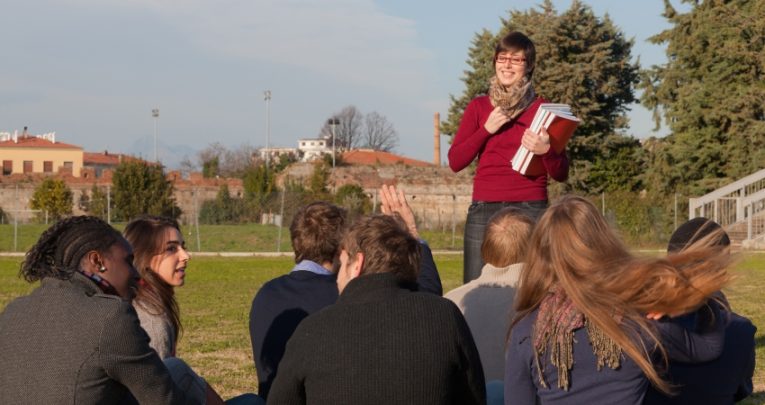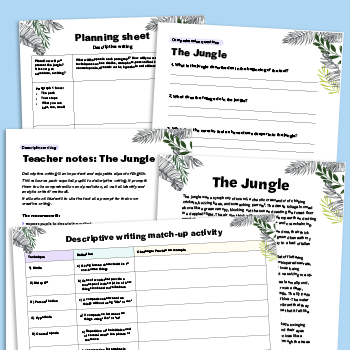Learning outside the classroom – Benefits for ‘desk-bound’ subjects

Why teaching traditionally desk-bound subjects outdoors can add a tangible and visceral impact to certain topics

Most of the time, school is an interior business. There are certain subjects with ‘outdoor’ curriculum components that require some learning outside of the classroom. This includes PE, but also science and geography.
However, students can typically expect their studies of English, maths and history to involve being sat at a desk. Yet here’s the thing – those latter subjects can also benefit from getting students outside on occasion.
Learning outside the classroom
It can, however, be difficult to justify teaching traditionally desk-based subjects outdoors if we remain fixed on the idea that those subjects must always be learnt while looking at a smart board.
To get the most out of learning outside, it’s important to not simply try moving the lesson from A to B. Being outside should afford learners an additional level of understanding of the topic or subject being taught. It shouldn’t just be a mirror of what they would be doing in the classroom, only outside.
Outdoor space can be an important tool for contextual understanding. This is especially when it comes to exploring perspectives students may not have previously considered.
The lesson needs to involve a certain degree of freedom from the shackles of pens and books. This will demand some confidence on the part of the teacher.
However, with careful planning and consideration, even spending just a few minutes outside can make a whole lot of difference once you’re all back in the classroom again.
Contextualising
Analysis of empathy is something we can often struggle to get students to properly engage with. It’s very difficult for them to experience exactly what another person or character or person might have experienced, or to link their own experiences to unfamiliar situations. This is particularly true when they’re sat at a desk.
There’s a certain power in going outside on a cold day and observing mists on fields when learning about the trenches.
Sitting in a courtyard on a hot summer’s day (while obviously observing all appropriate safety measures) with the topical focus of the subject at the forefront of students’ minds can give them new perspectives.
Of course, there’s a good chance they’ll have been in such environments before. But by encouraging them to use their senses and engage with lesson material through a topical lens, their understanding of what events would have been like for others can grow significantly.
By getting learners to consider their environment more carefully, we can build their self-efficacy. By getting students to engage more with context, we can encourage them to use what they see and hear around them to further build on their understanding.
It may seem like a simple exercise. However, taking learners outside to experience weather, sounds and smells can be a powerful means of increasing their overall awareness, further building up their cultural capital.
Real life
Taking learning outside of the classroom can may also help learners see how subject content can be translated into the real world.
Simple tasks, like identifying the different forms of language used on signage around the school, or applying mathematical analysis to various structural aspects of the school building, can get young people thinking in more detail about how what they’re learning correlates to real life.
It doesn’t take much, but these are the kinds of links that can significantly increase students’ engagement with your subject.
If a young person is able to better appreciate how their desk-based learning fits into the world, then the learning itself can become much more valuable.
As adults, our more extensive lived experience enables us to make such links far more easily. Students can sometimes need our help before making those links themselves.
Before taking the step of moving your lesson outside, however, there needs to be a focus. It can’t just be a tokenistic decision. Consider which of your topics may benefit most from spending time learning outside. Then see if you can apply aspects of contextual learning to those topics.
Outdoor learning should always add value to what you’re already doing in the classroom. It isn’t about prizing one form of learning over the other. Rather, it’s about helping learners understand that school isn’t just about pens and desks.
Elissa Riches is an initial teacher training tutor and a former head of media studies.











